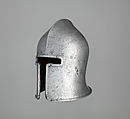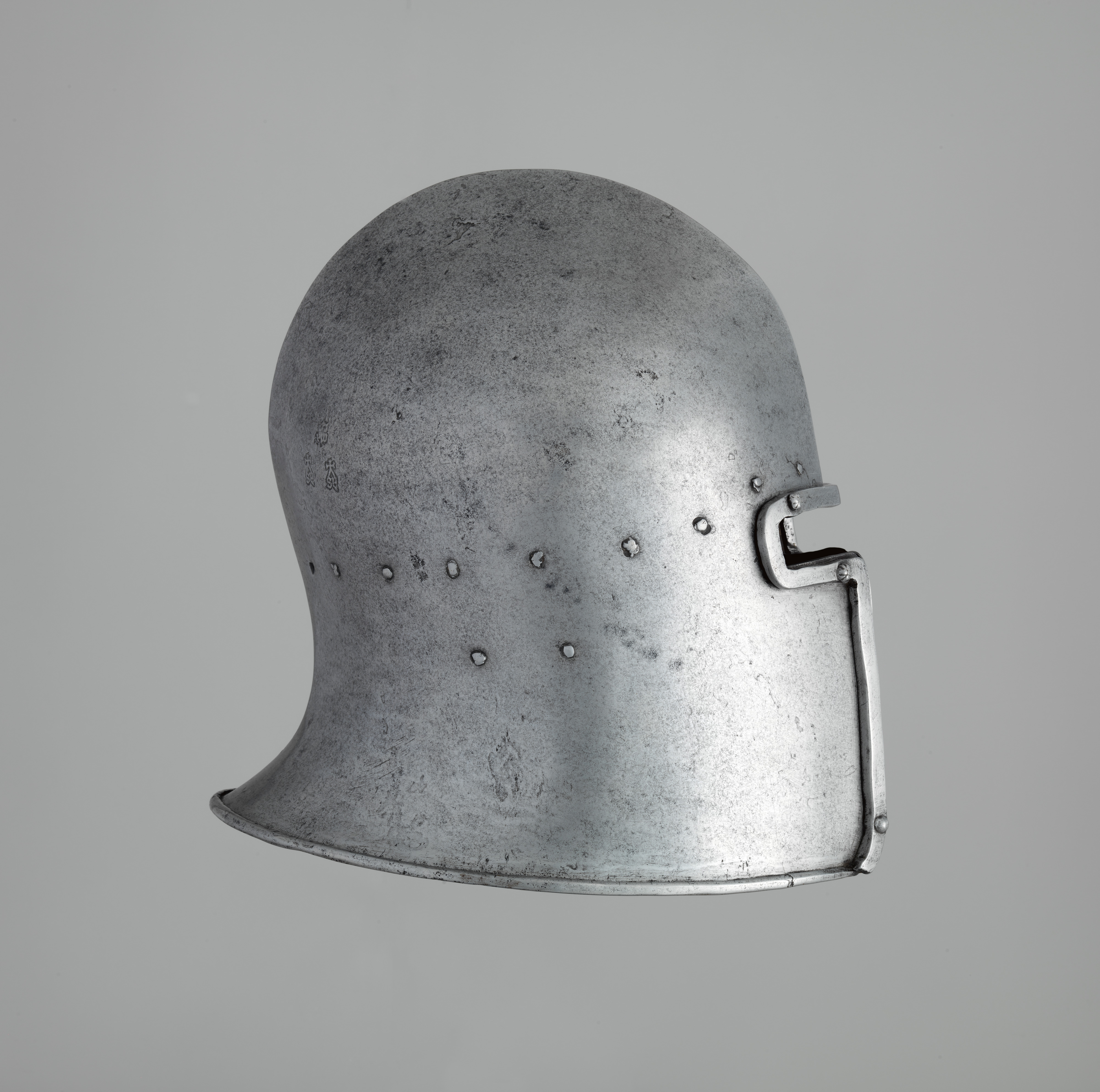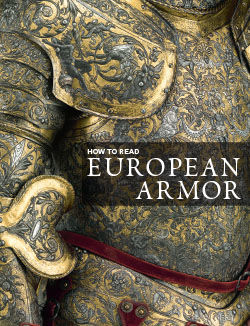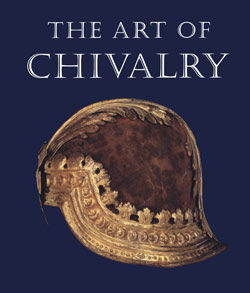Barbute
Not on view
The english term barbut (from the italian, barbuta) denotes a characteristically tall form of visorless helmet with narrow T- or Y-shaped face opening that was worn almost exclusively in Italy in the third quarter of the fifteenth century. This barbut is forged from a single plate of steel, its hemispherical skull rising to a sharp comb at the top and descending at the sides and back almost to the tops of the shoulders; the back of the helmet has an elegant profile that curves inward to follow the nape of the neck, then turns outward to form a short tail. The face opening is T-shaped and is reinfored by an applied band of iron held by decorative rosette rivets. The series of rivets encicling the middle of the bowl formerly secured a strap on the inside, to which was sewn a padded lining; below this, on either side, is a pair of rivets to secure the chin straps, now also lost.
This elegantly proportioned and gracefully shaped barbut demonstrates the virtuoso talent of the armorer. It should be kept in mind that the armorer forged the barbut from a single plate of steel, hammering the metal into shape while maintaining the protective thickness of the plate and smooth rounded glancing surfaces. Its beauty is thus integral with its protective function. Like most helmets of the fifteenth century, it was originally polished mirror bright, though a number of paintings and other works of art––such as the "birthplate" of Lorenzo de' Medici (now in the New-York Historical Society, The Bryan Collection) or the intarsia panels from Federigo da Montefeltro's study from Gubbio (acc. no. 39.153)––show barbuts covered with fabric, mounted at the edges with decorative borders, and surmounted by heraldic crests. Helmets decorated in this manner (see for example, acc. no. 29.158.15) are referred to in documents as alla Veneziana (in the Venetian manner) to denote the preference in Venice for collorfully decorated helmets such as these. This barbut has no holes for the attachment of such ornaments or crest, but nevertheless can be associated with Venice by the presence of a tiny mark in the form of the Lion of Saint Mark stamped on the left cheek. A total of six barbuts in the Metropolitan Museum are stamped with this mark, which is variously thought to be the ownership mark of the Venetian arsenal, or a customs control mark used in Venetian territory. This barbut is one of seven or eight, each bearing various armorers' marks, but all with the Lion of Saint Mark, that are said to have been discovered early in this century in Venetian territory, in the possession of Count Gino Cittadella, at Villa Saonara, near Padua.
Three armorer's marks are stamped into the metal at the rear of the helmet. The upper mark is formed of the letters XPO surmounted by an open crown, and a pair of marks below, each composed of the letters S Y beneath a split cross.
The marks are apparently unrecorded but are of a type generally recognized as Milanese. The letters incorporated into the marks are usually abbreviations of the armorer's Christian or family name. The master's mark on this barbut probably refers to a Christoforo (the Greek chi-rho- monogram––X P––stands for Christ, so that X P O can be read Christoforo). Many armorers with the name Christoforo are recorded in Milanese documents of the fifteenth century, including one Christoforo dei Seroni, mentioned in 1483. Whereas the last name of this armorer agrees with the second set of marks (the letters SY beneath a cross could plausibly be an abbreviation for Seroni), the recorded date for this armorer is considerably later than the dating of this barbut. Whether or not this helmet is an early work by Seroni or is by another armorer named Christoforo is subject for further speculation.
Due to rights restrictions, this image cannot be enlarged, viewed at full screen, or downloaded.
This artwork is meant to be viewed from right to left. Scroll left to view more.





